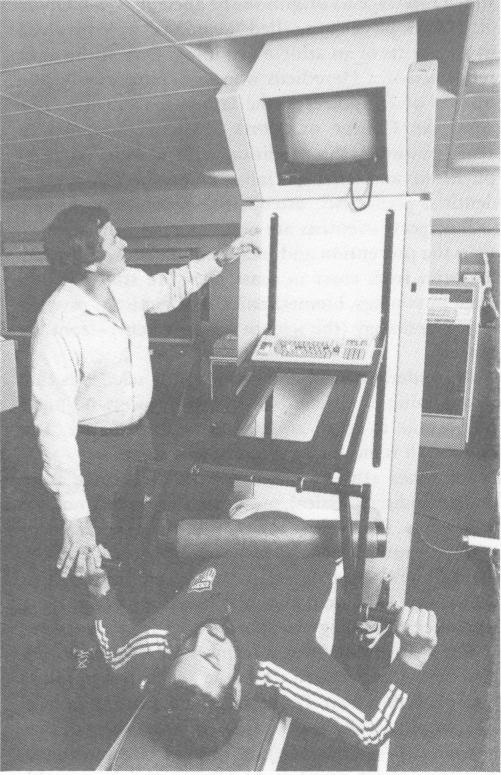| Previous | Index |
![]()
Using the computer and exercises to work on Oerter's neurological patterns-you train the muscles and the nerves, says Ariel-Oerter is much closer to his optimal performance. That may not be as high as some of the younger throwers, who may have a better biological advantage, but Oerter is now throwing 221.4 feet, far better than he did during his "prime."
If sports science has already begun producing better athletes, it is still a relatively unsophisticated science, and its developing techniques will undoubtedly produce even better results in the future. The use of steroids is an example.
Pill parity in the steroid race
Anabolic steroids are basically androgens, or male hormones, which help build muscle bulk and strength and are favored by athletes in many events from weight lifting, the shot put and discus to, more recently, running. Although illegal by international athletic rules (testing is conducted at all major international meets and during the Olympics) and available by prescription only, many athletes take them indiscriminately, with the attitude that "if two pills (or injections) are good, ten can get them a medal."
And this has them flirting with potentially dire consequences; prolonged and overuse of steroids can lead to sterility and sexual dysfunction. In some Eastern European nations, elite young female athletes are said to be given hearty doses of the substance at key points in their careers. In the United States, athletes take steroids by choice, but the effect is quite similar to an arms race; if the Soviet throwers are getting so many steroids a day, an American must have pill parity or lose. "You can't be world-class without steroids," says one flatly. But Ariel sees sports science as only
at the first stage of understanding such chemicals. "Next is looking at the chemistry of the body," he says. "And I hope it can be done naturally.
"The muscle cells store fat and carbohydrate [the latter as glycogen] which break down chemically to restore ATP [adenosine-triphosphate], the body's immediate source of energy for muscle contraction. You only have so much ATP in your body and in a sprint, for instance, you burn it up. A 100-meter man can exhaust his supply, accelerating all the way. But a 400-meter man must pace himself or he will exhaust his supply too early in the race and slow down."
Ariel feels that there may be a nutritional way to stimulate ATP production naturally, to give an athlete more to work with. "Then there is no reason a sprinter can't go all out in a longer race."
Dr. Ariel gives colleague a workout on computerized exercise device that provides readouts of performance.
SMITHSONIAN July 1980

![]()
| Previous | Index |